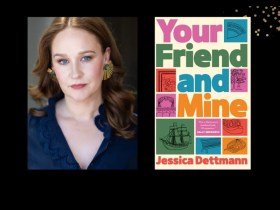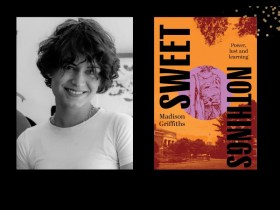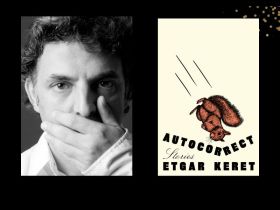Victor Kline promotes his book in Hawaii.
An increasing number of writers have come to utilise the literary nonfiction genre of memoir to unearth the trauma of their childhood years – an effective medium in establishing intimacy and immediacy. New Zealand-born writer, Sydney Smith, details the abuse she suffered at the hands of her demented mother in The Lost Woman, and American writer Michael Kimball’s fifth novel, Big Ray, uses a series of short vignettes to chronicle the disturbing treatment Kimball and his sister received in a dysfunctional household.
Victor Kline’s The House at Anzac Parade is in a similar vein. In the second page of his prologue, Kline reveals that he was ‘sexually, physically and emotionally abused’ by his mother. Insofar as Klein’s book is set during a particularly fraught period of Australian history, his memoir also serves as a valuable historical account of the social and political upheavals that characterised much of Australia and the broader world in the 1970s and 1980s.
Kline devotes the first 40 or so pages of his memoir to the first two decades of his life, spent under the same roof with an anti-Semitic mother – who at different points behaved in a hypersexual manner with her son and forced him to be less Jewish – and with a submissive father who juggled an addiction to bridge with an extramarital affair. Formative as they were in shaping who Kline was, and the unseen demons he subsequently faced for the rest of his life, the first few chapters of The House an Anzac Parade plod along and invoke a sense of cloistered claustrophobia – perhaps indicative of the very entrapment that Kline confronts in his early years.
Right from the moment that Kline enrols himself in law school, however, the pace of the book accelerates and so does Kline’s life. He becomes the youngest barrister in Sydney, discovers he has contracted a life-threatening disease, gets married and subsequently moves to Alice Springs in 1975 to become a defence barrister.
It is those following chapters that constitute some of the most highly charged sections of the book, as Kline bears witness to racial discrimination, a perverted law system and echoes of Holocaust Germany that characterise an area notorious for the abnormally high instances of crime it engendered. The chapters set in Britain and France are entertaining enough, but Kline excels in excerpts that follow much later in New Guinea, where he tenderly recounts a month spent teaching villagers English. The passages flow beautifully to paint an environment far removed from anything the author has ever known.
Kline is a highly effective storyteller and an expert at conjuring characters from his past with inescapable wit, candour and painstaking detail. The crazed Frank, who called Kline while he stabbed himself in the stomach, the agoraphobic Brian, who would not leave his house even to dine with the love of his life, and the bellicose army colonel, Graham Stoker, stay with readers well after the pages have been turned.
But one of the most terrifying characters to emerge in Kline’s life is the unassuming orphan, Rangani. In a scenario that presents itself more than halfway through the novel, Kline and his wife venture to the civil warzone Sri Lanka. While the passages set in Colombo are eye-opening in their depiction of the nepotism, corruption and the endless bureaucracy that characterise official procedures in Sri Lanka, as well as the discrimination Sri Lankan Tamils face at the hands of Sinhalese, it is the ensuing passages set in Sydney when Kline and his wife settle down with their three newly adopted children that are the most chilling in the book.
Where Kline falters is where he tries to convince readers, as opposed to showing them, the effects of the abuse he suffered as a child through a series of clunky passages interspersed in the book.
As readers embark with Kline on his pulsating journey around the world, they are privy to something that Kline himself is not – the knowledge of the sexual abuse his mum afflicted upon him. Kline journeys through his life grappling with haunting images and a sense of shame that he cannot quite comprehend, culminating in him finally having to confront his demons with the help of people he calls his ‘angels’.
In what is a hard book to put down, Kline paints a colourful portrait of life in the mid to late 20th century. The House at Anzac Parade is as disturbing as it is inspirational and edifying.
Rating: 3½ stars out of 5
The House at Anzac ParadeBy Victor Kline
Softcover
ISBN: 9780947245016
231 pages
Frances Allen Pty Ltd





